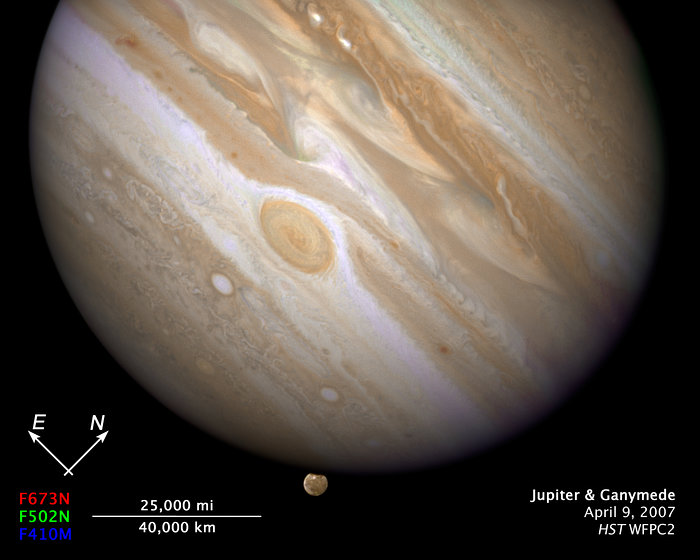Compass and scale file for Jupiter and Ganymede
In this crisp Hubble image, Ganymede is shown just before it ducks behind the giant planet.Composed of rock and ice, Ganymede is the largest moon in our Solar System. It is even larger than the planet Mercury. But Ganymede looks like a dirty snowball next to Jupiter, the largest planet in our Solar System. Jupiter is so big that only part of its Southern Hemisphere can be seen in this image.
Hubble's view is so sharp that astronomers can see features on Ganymede's surface, most notably the white impact crater, Tros, and its system of rays, bright streaks of material blasted from the crater.
The image also shows Jupiter's Great Red Spot, the large eye-shaped feature near the centre
Credit:NASA, ESA and E. Karkoschka (University of Arizona)
About the Image
About the Object
| Name: | Ganymede, Jupiter |
|---|---|
| Type: | Solar System : Planet : Type : Gas Giant Solar System : Planet : Satellite |
| Category: | Solar System |
Colours & filters
| Band | Wavelength | Telescope |
|---|---|---|
| Optical B | 410 nm |
Hubble Space Telescope
WFPC2 |
| Optical V | 502 nm |
Hubble Space Telescope
WFPC2 |
| Optical 673 |
Hubble Space Telescope
WFPC2 |
